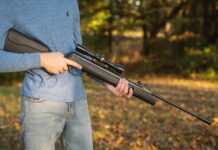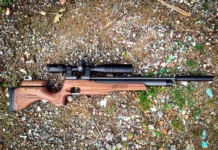Most people would not find a plate of fried larvae appealing.
However, there are many ethnicities across the world who consume insects on a regular basis.
These groups of people will tell you that edible insects are extraordinarily flavourful and delicious.
There’s also a current trend in the US where people are switching to edible grubs as a protein source since they are energy-packed and nutrient-rich.
They are also easy to grow or find and relatively straightforward to prepare.
If you’re one of the many, who wish to make a conscious effort towards sustainable methods of living and are wondering what do grubs taste like, keep reading to find out.
Table of Contents
What are Grubs?

Grubs are the larvae of beetles.
These white worm-like creatures are often mistaken for worms, but they are actually the larval stages of several species of beetles, like the scarab or June beetles.
If you find it hard to identify these creatures, you can look at their color; most larvae are white or off-white.
Their legs and appendages are located near the head, and they can grow up to ¼ or more than an inch long.
The larvae have a C-shaped body that is wrinkled and soft to the touch.
Many of these baby beetles are considered pests that destroy the natural vegetation grown around homes.
These insects are found buried in the ground.
They feed on the roots of plants until they mature into a pupa.
Many insects are eaten worldwide, and grubs are just one variety of bugs considered edible.
Although, once the pupae have completed the chrysalis stage, most adult beetles cannot be consumed.
What Do Grubs Taste Like?

Grubs are a very non-conventional ingredient to have in your pantry, and many might not be aware that such a product is available for consumption.
So, what does it taste like? Well, many have compared it to chicken or even beef.
Some have even said the grubs have fruity flavors.
These creatures are soft and pack a whole lot of flavor in their tiny bodies.
Most people will agree that the larvae taste like soft, tender beef bone marrow.
Some have said the taste resembles bacon when roasted over an open flame.
The bugs can be cooked in many ways and with various ingredients.
Depending on the cooking method, you can improve the flavor of the larvae immensely.
Some communities that consume bugs regularly are known to eat the grub raw.
If you’re bold enough to try them fresh and uncooked, be prepared for a bit of bitterness.
However, that does not last because most grubs have a nutty aftertaste with a cheesy texture.
Not only are they delicious, but grubs are also known to be highly nutritional.
They come packed with protein and all sorts of minerally goodness.
They are rich in Vitamin C, healthy fats, iron, zinc, phosphorus, etc.
Nowadays, many people, even in the west, have accepted these little critters as part of their diet.
Once you get over the fact that they are considered ‘pests,’ you’ll be surprised by how delicious they can be and how easy it is to prepare them.
Can You Eat Grubs?

Before trying anything new, you’re bound to ask, is it good? Or what does it taste like? You may even be asking whether you can eat it.
The latter may be an appropriate question to ask when it comes to this particular food group.
The answer is a resounding yes.
You can undoubtedly consume grubs.
These pasty white creatures are part of a larger group of insects that are considered edible.
If you’re reading this article, you’re most likely venturing into new, unusual culinary territories.
Bugs are definitely a different gastronomic experience.
They aren’t that appealing to look at, but they have intense flavors that will whet your taste buds.
There are places where these small umami-filled edibles are a common item at a dinner table and are enjoyed by the entire family.
Grubs can be cooked and served in several different ways, and people all over the world will claim that their method is the best.
Nonetheless, deep frying, steaming, and roasting are the most popular ways to prepare insects.
So, the next time you come across a plate of creepy crawlies, why not give them a taste?
Conclusion
A lot of research and study is going towards finding alternative protein sources for a sustainable lifestyle.
Grubs, mealworms, and maggots have all been deemed worthy of being served as a dinner menu item.
They are nutritious, filling, and high in calories.
Even though the idea of having worms on your table may be offbeat, you might actually enjoy eating them.
Here’s your sign to go and try out some grubs for your next meal; you will not be disappointed.
Entomophagy might be the change you need to shake up the monotony of life.






































![Air gun 101: The differences between .177 & .22 – Which jobs they do best ? [Infographic]](https://airgunmaniac.b-cdn.net/wp-content/uploads/2024/11/1773-150x150.jpeg)

